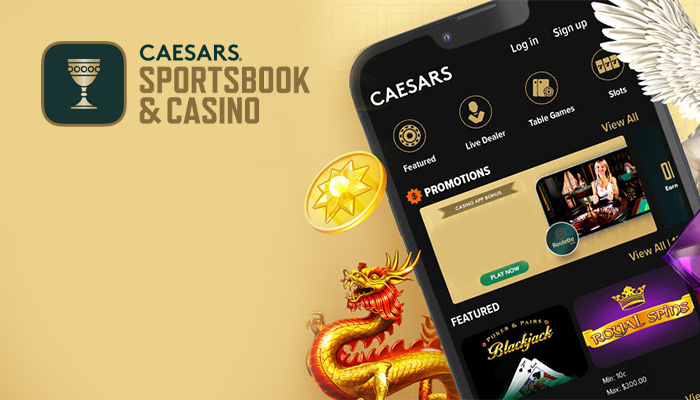Five of the Best Casino Marketing Campaigns Ever
 Best Casino Marketing Campaigns Ever
Best Casino Marketing Campaigns Ever
- What Are Casino Marketing Campaigns?
- The Best Casino Marketing Strategy In History?
- Vegas’ “What Happens Here, Stays Here”
- Paddy Power’s “We Hear You”
- Borgata’s “The Living Series”
- Cosmopolitan’s “Just the Right Amount of Wrong”
- Frequently Asked Questions
In today’s blog, we are going to look at something a bit different to what we’d normally cover. We’re going to be looking at casino marketing; more specifically, the most successful casino marketing campaigns in history. We’ll be looking at why these campaigns were so successful, what led to them becoming so well-known, and look at where the brands are today, to see if they’ve benefited in the long run.
What Are Casino Marketing Campaigns?
The gambling industry is one of the most competitive in the world. As a result, land-based casinos and online casinos must really step it up when it comes to their advertising campaigns – and some have managed to do just that. The best casino marketing campaigns successfully use unique strategies to stand out – often boldly – and subsequently attract new customers.
In today’s blog, we are going to be looking at how an offline and online casino marketing strategy can make or break a brand – and we’re going to be showing you some of the most successful campaigns to date.
The Best Casino Marketing Strategy In History?
One of the most successful casino marketing campaigns of all time was Caesars Entertainment’s “The Year of Caesars” campaign in 2012. With the tagline “You.All.Year.”, it aimed to promote their Total Rewards loyalty program and generate excitement across their different brands.
The multi-channel campaign was built around making Caesars Rewards members feel valued, offering them new benefits, promotions, and experiences. It also aimed to show non-members what they were missing out on by not being involved. While there was nothing specifically outrageous about this campaign (which is in stark contrast to some of the other ones we’ll look at today), Caesars’ campaign was an excellent example of how big brands should be running their marketing.
The campaign tapped into people’s emotional desire for recognition and personalized experiences. Total Rewards members were made to feel like VIPs with offers tailored just for them, and not only did this appeal to non-members – it also had a profound impact on retention rates.
TV and online ads featured Caesars’ A-list celebrity spokespeople sharing the experiences guests could have at Caesars resorts. The brand used celebrities who’d appeal to as many people as possible, from a wide variety of backgrounds, demographics, and ages.
But did their casino advertising strategies pay off? Well, in 2012, as a result of running this one campaign, Caesars saw their “Net Promoter Scores” increase by over ten points! Their play rate increased by a staggering 15%, and they had more sign ups in a month than they’d had in the previous six for the Total Rewards loyalty scheme.
With clever positioning, celebrity appeal, and understanding customers’ desires, the “Year of Caesars” became one of the most memorable and effective casino campaigns. It’s great to see US online casinos and offline casinos like this running genuine, player-focused campaigns, as it’s a win-win for all!
Vegas’ “What Happens Here, Stays Here”
One of the most successful tourism campaigns ever is Las Vegas’ “What Happens Here, Stays Here”. First launched in 2003, this slogan brilliantly captured the allure of Sin City as a judgment-free adult playground. This casino marketing strategy might have been disliked by some, but there’s no arguing its effectiveness.
The campaign was developed by the Las Vegas Convention and Visitors Authority alongside ad agency R&R Partners. It promoted the idea that Vegas is a place where people can indulge in activities without having to worry about long-term consequences. The slogan encouraged visitors to let loose, with the reassurance their behavior would remain confidential.
Early print and TV ads featured glimpses of Vegas’ adult-oriented attractions. They were, of course, primarily targeted at males, but a surprisingly large number of women were successfully targeted by the campaign, too.
The multi-year campaign was a huge success and shaped Vegas’ brand image as a sinner’s paradise. It appealed strongly to the campaign’s target demographic; those aged 25-54. From 2003 to 2009, visitor volume grew from 35 million to nearly 40 million.
“What Happens Here, Stays Here” became ingrained in pop culture and has, ever since, been widely parodied. In fact, you’ve almost certainly heard of the phrase “What happens in Vegas, stays in Vegas.” That was actually created during this advertising campaign – and while it got modified slightly by popular culture, it’s interesting to see where this iconic phrase actually stems from.
However, the campaign wasn’t without controversy. Some residents and politicians weren’t happy about scantily clad women in bikinis being advertised all over their city – although, unfortunately, there was little they could do, and it’s unlikely Vegas will ever change!
Over 15 years later, “What Happens Here, Stays Here” remains iconic and synonymous with Las Vegas. It exemplifies clever positioning and creative advertising that tapped perfectly into customers’ desires.
Paddy Power’s “We Hear You”
Irish bookmaker and casino Paddy Power is known for its irreverent and risky marketing campaigns – and they frequently run TV adverts that generate thousands of complaints from UK residents. Some of their stunts include parading a mockup of Irish legend Roy Keane daubed in green paint – to look like William Wallace, from Braveheart – around Dublin, just before the Euro 2016 clash.
In another even more controversial campaign, the bookmaker ran an “immigrant specials” billboard to make light of the Calais migrant crisis – and they were criticized heavily by the advertising watchdog for “racist and offensive” messaging. However, while controversial, there is no denying these tactics get noticed – and one of the most successful campaigns they ran was in 2018.
Paddy Power’s “We Hear You” campaign in 2018 aimed to increase their brand awareness in the competitive UK betting market. The tongue-in-cheek campaign poked fun at typical complaints directed towards the bookmaker from disgruntled punters.
However, where things got interesting was with the actors involved; they did appear to empathize with the complaints – and they cleverly made it begin to look like these were actually complaints you may run into at other, competing bookmakers – but not Paddy Power.
“We Hear You” successfully increased their brand awareness by 6% and did lead to a significant increase in sign-ups. Some of the key metrics from the campaign can be seen below:
| Metric | Achievement |
|---|---|
| Campaign Reach | 5 million people |
| Social Reach | 12 million people |
| Website Traffic Increase | 13% |
| Brand Consideration Increase | 4% |
| TV Ad Recall | 37% |
By the way, whether you’re looking for top casino bonuses and promotions, or the best online casino reviews, we have it all here – so be sure to check out our other pages, where you’ll find major online casinos offering fantastic promos!
Borgata’s “The Living Series”
In 2015, Atlantic City’s Borgata Hotel Casino & Spa launched an innovative marketing campaign called “The Living Series” to promote their venues. The campaign’s goal was driving ticket sales by making Borgata’s entertainment lineup a marquee attraction.
The Living Series ads featured Borgata’s celebrity resident performers like Boyz II Men, who had regular shows at the casino’s event center. Striking black and white portraits were shot by photographer Mark Seliger, known for his iconic celebrity shoots.
The aesthetic was edgy, almost editorial, contrasting typical casino marketing. Ad taglines read “Legends Live Here”, elevating Borgata’s roster of talent. Venue details were deemphasized, letting the famous faces take center stage.
Print and digital ads ran in the New York metro area with high awareness. Billboards, street teams, and social media expanded exposure. The campaign helped establish Borgata as an A-list entertainment destination.
In the first year, ticket sales for promoted shows increased 25-30%. Web traffic doubled and ticket referrals from the website tripled. The authentic artistic style aligned Borgata with top talent and attracted new cultural tourism.
By using celebrities to directly promote its assets, Borgata created intrigue and prestige. The campaign departed from conventions of casino marketing to highlight world-class entertainment. Dramatic portrait photography gave stars maximum impact. The Living Series became a distinctive platform to sustainably boost Borgata’s brand profile.
This is perhaps an example of responsible casino gambling advertising – as many criticize brands like Paddy Power who go for the shock value over anything else.
Cosmopolitan’s “Just the Right Amount of Wrong”
When the Cosmopolitan of Las Vegas opened in 2010, its launch campaign “Just the Right Amount of Wrong” brilliantly positioned the hip, design-focused property. The integrated campaign established the Cosmopolitan’s brand as a trendy hotspot for stylish travelers, and the slogan is still widely associated with the brand today.
The cheeky slogan referenced Cosmopolitan’s playful contradiction of stylish indulgence paired with affordability. Print and digital visuals featured lively photos of attractive couples living a life of luxury – but in a way that anyone could enjoy; i.e – “come to Vegas and you too can have all of this!”
Quickly, ads on taxis and billboards spread around the city, all with unique taglines and phrases like “Where your worst behavior is still your best behavior” and “Because you weren’t born yesterday”.
The campaign was a stunning success, and during its first year, the Cosmopolitan saw over 750,000 room bookings despite opening in the middle of a recession! The property became known as a hotspot for a younger, trendy crowd, and, in fairness, the risqué but playful tone was signature Cosmopolitan. By embracing edgy contradiction, “Just the Right Amount of Wrong” positioned the Cosmopolitan as a fresh newcomer on the Vegas scene.




